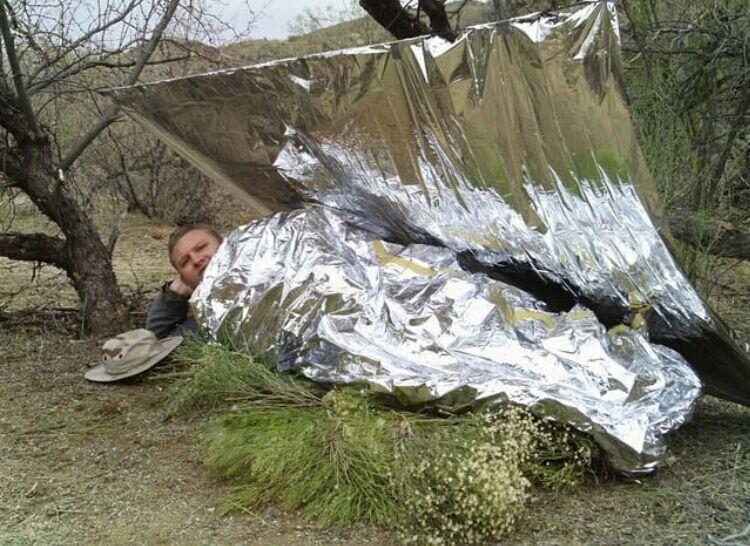Let us continue with our wilderness survival discussion. This time we are going to consider the dangers of exposure, exposure to extreme temperatures from both end of the spectrum.
“Hypo” means not enough and “Hyper” means too much. Hypothermia in a human occurs when the body cannot generate and maintain a sufficient body temperature. Your body wants to maintain a constant internal temperature, and it does not respond well to drastic changes.
Have you rated us on iHeartRadio yet?
Click Here to “Heart” us and Leave a Comment below the episodes >>
Hypothermia also occurs as a result of traumatic injury, particularly blood loss. The body cannot maintain a healthy core temperature and the initial injury is made worse. A wilderness survival situation, where you are out of doors and subject to the elements, demands that you acknowledge and address the very real danger of dying do to exposure.
Hot days in the desert give way to cold nights, ditto for the mountains. A thirty degree drop in temperature is not uncommon in high elevations or arid desert country. During my first trip to the Mojave Desert, I was shocked to find the caps of our water can had ice on them in the morning when it had been 70 degrees the day before.
Naturally, a fire will warm you and we have previously discussed the importance of fire in an emergency survival situation. But, how do we stay warm without constant fire?
Minimize wind exposure. Trees, a hillside, large rock formations, etc. all act as a wind block. In open country, dig in to the earth to get out of the wind if you must. Dig out a snow cave to get out of the wind if that is your only option.
Remember, what the Bible tells in Ecclesiastes 4:11 “Again, if two lie together, then they have warmth; but how can one be warm [alone]?” If you are fortunate enough to have someone with you, share body heat in the cold.
Whenever you step off the asphalt and into nature, you should have layered outer garments. A quality wind/rain resistant jacket is a must have wilderness survival item. Cover your head with some type of hat that both protects it from the sun and will keep body heat from escaping from the top.
Also, put something between your body and the ground. Depending on your perspective the ground transmits the cold to your body or suck the heat out of you. That is why infantrymen are issued green rubber sleeping pads. The pad acts as an insulator and keeps the ground from sucking out your body heat.
Leaves, pine straw (needles), etc. are better to sleep on than the bare ground. If you can sleep off the ground, all the better.
Military grade ponchos and insulated poncho liners are excellent minimalist gear for backpacking and hiking. A quality poncho not only protects from rain, but it can provide shade from the sun and some protection from the wind.
Shiny Mylar “space” blankets cost very little and can be lifesavers. These compact, lightweight survival items are surprisingly good at keeping in your body heat. Space blankets were indeed developed by NASA in 1964. Every trauma bag or pack should have space blankets.
One added benefit of the space blanket that may be overlooked by some is the fact that the shiny silver material reflects light like a mirror. In addition to keep your body heat in, a space blanket can also be used to signal the plane or helicopter that is searching for you.
As for protection from heat, shade is your friend. Using 550 cord or boot laces, you can stretch out a space blanket to create shade. Natural shade from trees, rock formations, etc. are obvious choices.
In desert or extremely hot environments, minimize activity during the heat of the day and work at night if you must.
Recommended Items for Wilderness Survival
- Mylar “Space” Blanket, Fire Stick, 18D Blood Soaker (tinder), 550 cord
- Wilderness Survival PLS Kit


Pingback: Best Of SOTG: Sermon on War | Student of the Gun Radio